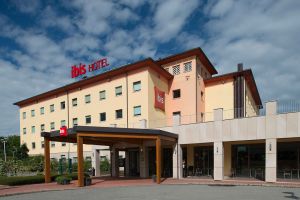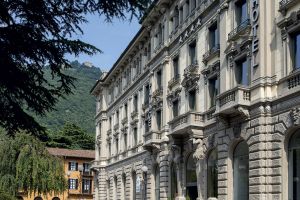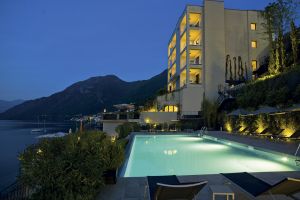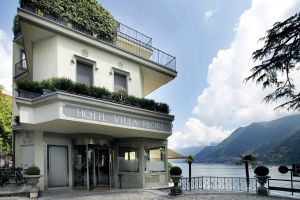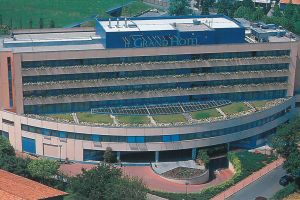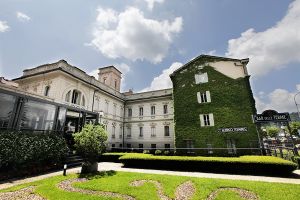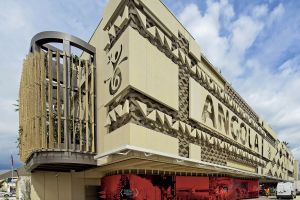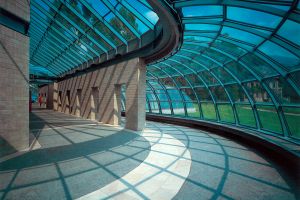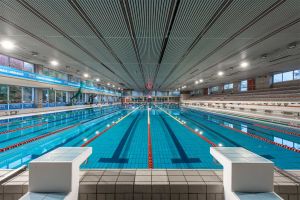Aglaia
A three-star hotel with one hundred and fourteen rooms was built in Grandate for the international chain of Ibis. In order to ensure the soundproofing of the rooms - as required in the Customer's parameters - a sample bedroom was prepared in the central part of the building, where noise reduction tests that concerned the walls, doors and the entrance door were then carried out. As far as the bathrooms were concerned, having a particular diamond shape, they were made available externally by the Customer using prefabricated cells that were delivered to the site complete with all equipment, ready to lay on the surface and for the connection to the facilities.
The work on the Hotel Palace - inserted in the Plinius apartment building (which is partly residential and partly used as accommodation) - involved internal renovation works of the first and second floors, intended to accommodate the rooms, for a total of sixty-two units. The work - which also included doors, window frames, technological systems and bathrooms - has also allowed to equip the hotel with all the acoustic and thermal requirements necessary for its standards. The work was carried out in a very short time during the winter period, guaranteeing the efficiency of the structure.
The Filario Style Hotel is a new building consisting of eleven superior rooms, two suites and a restaurant with a pool and a beach by the lake. The realisation of the hotel has given to the Municipality of Lezzeno a new high-level accommodation opportunity: due to its characteristics, Filario Style Hotel is part of the "Design hotels" network.
A lot of attention was paid to the quality of the services offered, the high standard of the finishes and the control in the design stage.
Façades entirely covered with local stone, high-quality wood flooring, personalized furniture, large windows overlooking the lake... are just some significant elements that make this work unique. The aim was to create an opportunity to enjoy - in the utmost peace and comfort - the wonders that Lake Como has to offer. Each of the suites has a mini swimming pool and terrace with wooden flooring overhanging the lake. At the back of the suites, there is a fully equipped gym.The hotel does not use gas: the heat pump uses lake water for heating, air conditioning and hot water production (as well as for the heating of the pool). Specific attention was paid to acoustic soundproofing and in contrasting thermal dispersion.
Villa Flori is made up of fifty-two rooms with lake views and a restaurant on the ground floor in the park of the property.
Inside the park, an independent house has also been renovated and its now being used as a suite. The work involved the extension of the existing structure, as well as the architectural, plant and functional adaptation of the fifty rooms and the suite, in order to align the structure to the new functional and safety standards.
The Angola pavilion - made for Expo2015 in wood and concrete - was presented as a well-identifiable sequence of volumes and elements: the "exhibition machine", the representative wing/central offices, the concluding volume of the stage and the technical and management services, the vertical connection wing of representation (main staircase).
The unifying element was the wing in line on the north side, where the vertical connection systems (stairs and ramps) and the technical and service spaces were placed.
The project developed the idea of the "Exhibition Tree" which, in turn, resumed the meaning and centrality of the "Imbondeiro" (Baobab) in the Angolan culture: the tree was transformed into the bearing structure of the entire "Exhibition Machine", supported by a central "castle" consisting of four large pillars and two powerful truss beams of over thirty meters.
The articulation of the volumes was clearly readable in the plans:
- The "Exhibition Machine", with the main exhibition path, characterized by a large space at full height;
- the "representation/conference wing", seat of the Commission offices and the "temporary exhibitions/exhibitions" area;
- the "technical wing and stage", with the management and press areas, as well as the stage for outdoor performances;
- the roof garden: Angolan nutrition learning and experimentation area (garden, laboratory and restaurant).
A large "scenic stage" solved the main prospectus of the pavilion as a key element for external "communication".
A part of the pavilion was dismantled and recovered in Angola for the realization of a museum of the Angolan culture.
The expansion and modernization of the Lambrone sports centre have affected the soccer fields all restored in approved synthetic grass (of which one FGIC approved) and the activities related to other disciplines such as athletics (track and weight/javelin/disc launch area) and archery (with a FITARCO approved structure), a swimming facility with a 25-metre semi-Olympic pool, a 20-metre swimming pool for water gymnastics and a 5 by 6 metre pool suitable for children (even new-borns), a wellness centre featuring a 200 square metre pool with water games, solarium, spa, wellness area and fitness area. Outside is the summer area, with a 600 square metre swimming pool with a waterslide (also equipped with hydro-massage area and water play area) and a pool with a sloping beach. There is an adjacent bar and refreshments area. The old clubhouse was designed for changing rooms and facilities. The facilities include a tennis court and a beach volley pitch. The overall work also covered the road, with the realization of an iron bridge over the river Lambro, made off site and then placed in a single solution on the reinforced concrete pillars previously prepared and lowered using a large crane, and the implementation of safety measures of the road access to the centre. A co-generator serves the Lambrone Sports Centre.
International Exhibition and Congress Centre. Inside the park, stands the Villa Erba International Exhibition and Congress Centre, a glass and steel construction that is inspired by the design of the old greenhouses of the lake: a perfect balance between history, elegance and innovation. This extraordinary building, with an overall area of over 10,000 square metres, consists of a circular pavilion and three adjacent wings: Lario, Cernobbio and Regina, able to host more than 500 stands, but also 28 independent meeting rooms with capacity ranging from 50 to 1,500 seats.

